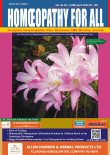Integration of Teaching and Research in Homoeopathy
Keywords:
Quality teaching, Quality research, Integrated teaching and research, Role of policy- makers and statutory/regulatory bodiesAbstract
‘Teaching’ and ‘Research’ are two important domains of academia which need promotion and growth independently for the benefit of homoeopathic professionals of all categories. Most of the academicians believe in research- informed teaching, since quality research is essential for teaching of high standard. The research activities of the teaching faculty increase knowledge currency, credibility, competence in supervision and motivation. It is an established fact that research- informed teaching is essential for high quality teaching. Similarly, quality of research methodology and outcomes depends upon the educational background of the researchers. The link between teaching and research cannot be established automatically. Rather, an integrated teaching and research environment has to be created in the campuses of educational and research institutions, with the efforts of the policy makers, statutory and regulatory bodies, universities and support of the teaching faculty with whole hearted cooperation of the students – the ultimate beneficiaries
Downloads
References
Siemens DR, Punnen S, Wong J. Kanji N. A survey on the attitudes towards research in medical school.BMC Med Educ 2010;10(4):Doi: 10.1186/1472-
-10-4.
Khan H, Khan S, Iqbal A. Knowledge,attitudes and practices around health research: the perspective of physicians -in- training in Pakistan. BMC Med Educ 2009; 9:46.Doi : 10.1186/1472- 6920-9-46.
MeenakshiB , Prakash UR, Deepti D, Das K Timiresh, Daral S. Need to navigate undergraduate medical curriculum towards developing research skills. J Contemp Med Educ 2016;4(01):18-20.
Reddy MVR. Need to integrate student research with the medical course curriculum in India. The Health Agenda 2013; 1(03): 45-48.
Rani RJ, Priya M. Knowledge, attitude and practice on medical research: the perspective of medical students. BiosciBiotechnol Res Asia 2014; 11(01): 115-119.
Darden A. Integrating Research and Teaching Heightens Value to and of Undergraduates. ASM News 2003; 67(07):331-335.
Nayak C. Strengthening Homoeopathic College Infrastructure for Quality Research. In: Central Council for Research in Homoeopathy, editor. Enhancing Quality of
Research in Homoeopathy. National Convention on World Homoeopathy Day. 2017 April 9-10;New Delhi, India: Central Council for Research in Homoeopathy , New Delhi ;2017,pp 10-15.
Aithal PS, Kumar PM. ABC model of research productivity and higher educational institutional ranking. Int J Educ Manage Eng 2016; 06(06); 74-
Hugget KN, Gusic ME, Greenberg R, Ketterer JM. Twelve tips for conducting collaborative research in medical education. Med Teach 2011;33(09): 713-718.
Upadhyay RP, Nayak C. Homoeopathy emerging as nanomedicine. Int J High Dilution Res. 2011; 10(37):299-
Devi V, Ramnarayan K, Abraham RR, Pallath V, Kamath A, Kodidela S. Short term outcomes of a program developed to inculcate research essential in undergraduate medical students. J Postgrad Med. 2015; 61(3): 163-8.
NHMRC Information paper. Evidence on the effectiveness of homoeopathy for treating health conditions. National Health and Medical Research Council, Govt. of Australia; 2015.
Ministry of AYUSH, Govt. of India. Homoeopathy: Science of Gentle Healing, revised edition. New Delhi: Ministry of AYUSH, Govt. of India: 2018.
Deo MG. Undergraduate medical students’ research in India. J Postgrad Med. 2008; 54: 176-179.
O’Clair K. Preparing graduate students for graduate level study and research. Reference Services Review. 2013: 41(02); 336-350.
Fathalla MF, Fathalla MMF. A Practical Guide for Health Researchers. Cairo: World Health Organisation; 2004.




